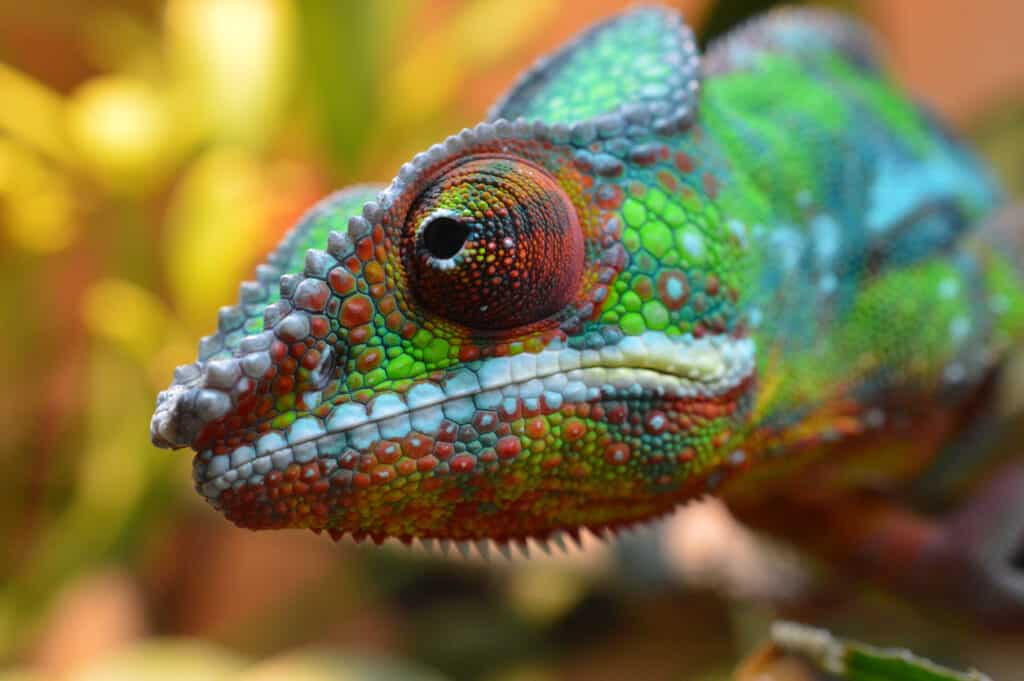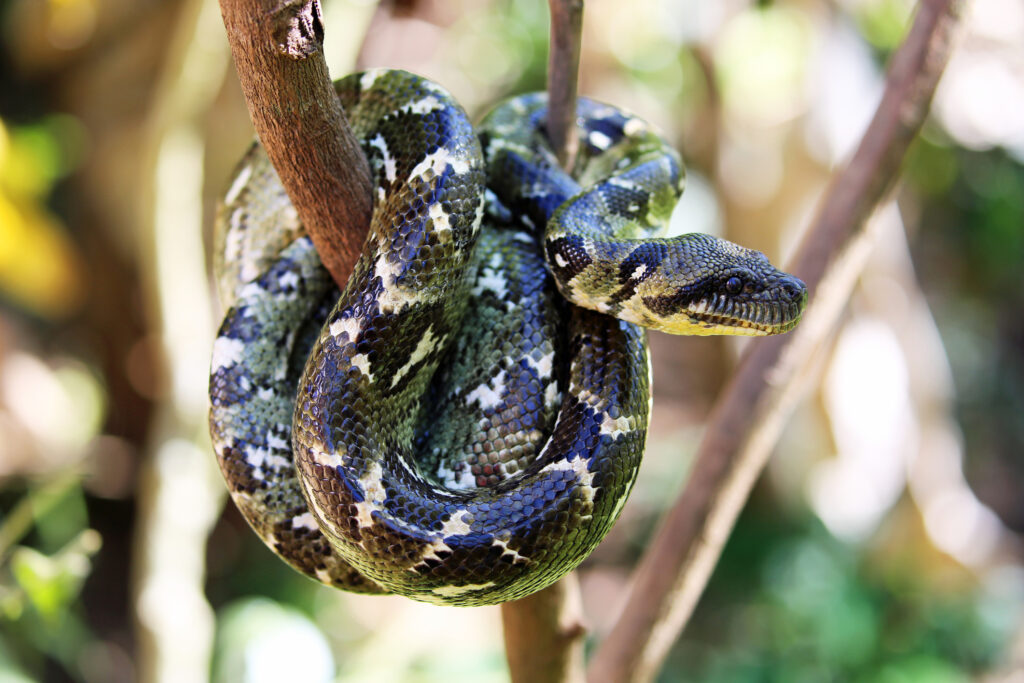Which Fish Live in the Danube River?
Diverse water habitats exist all around the world, and our rivers can provide a fascinating snapshot of the aquatic animals that thrive in different habitats. The shallow bodies of water make it much easier to discover the characteristics and behaviours of the animals inhabiting these waterways.
One of the most famous waterways on the planet is the Danube, which stretches across central and southeastern Europe. But it’s not just impressive because of its size – the Danube is also home to an exciting array of aquatic species, which we’ll be exploring in greater detail here.
5 things you should know about the Danube River
Before we get into the wildlife that lives in and around the Danube River, we’ll give you a chance to get to know the river with a selection of our favourite facts about it.
Europe’s second-largest river
Beaten only by the Volga in Russia, the Danube is the second-largest river in Europe. Its length spans over 1,770 miles, with 1,501 miles of it being navigable. So, if you really want to, it’s possible to travel from the start in Germany’s Black Forest, travelling through 10 countries to the mouthin the Black Sea (almost) completely!
It passes through 10 countries
If the Danube had a passport, it would be full of stamps since it passes through an impressive total of ten countries, includingGermany, Austria, Slovakia, Hungary, Serbia, Bulgaria, Moldova, Croatia, Ukraine and Romania. It even runs directly through Vienna, Belgrade, Budapest and Bratislava which are the capital cities of Austria, Serbia, Hungary and Slovakia.
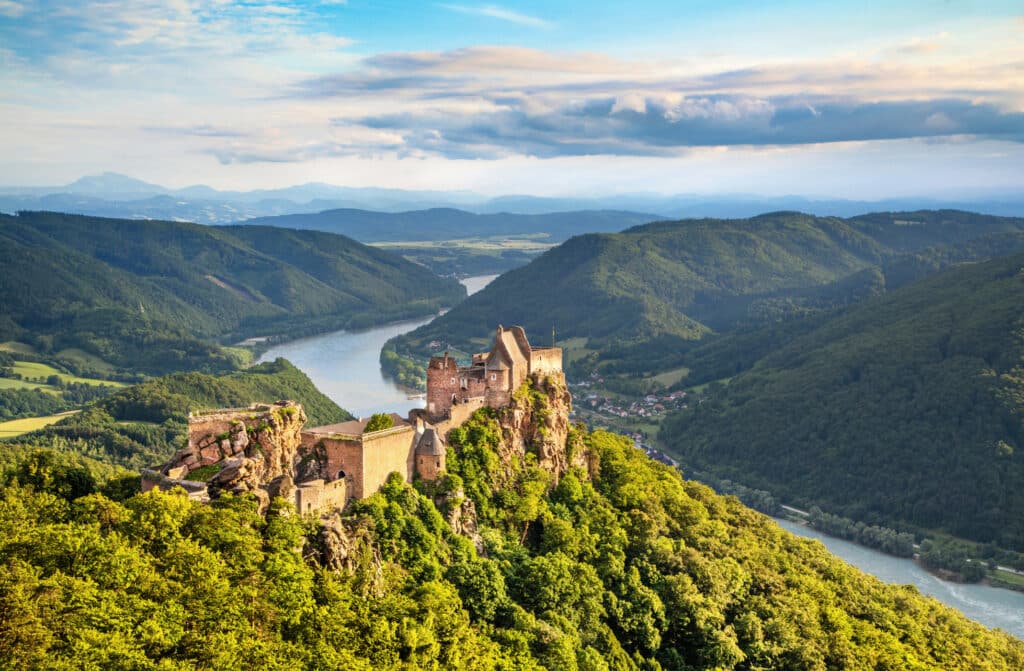
It plays an important role in nature
The Danube provides fresh drinking water to around 20 million people, making it one of Central Europe’s most vital sources of fresh drinking water.
Plus – speaking of nature – there are a total of eight national parks nestled along the riverbanks of the Danube, including Persina Nature Park in Bulgaria and Gornje Podunavlje Nature Reserve in Serbia.
Significance in WWII
In 1944, the Nazis sunk their own ships on the Danube River to avoid having them captured by the Soviet Union. Today, visitors can still see the sunken ships from the riverbanks during the summer months when water levels are at their lowest. The river has a bit of a reputation as a boat graveyard because of this!
Economically important
Throughout European history, the river has been a pivotal trading route between countries and is extremely important for the economies of the surrounding nations due to providing an important transport route to and from the Black Sea. The river has also been key to the fishing industry in the region since the Middle Ages.
What species will you find in the Danube River?
With the river passing through so many countries and being Europe’s largest wetland area, the biodiversity here is something incredibly special. The river is home to a huge collection of waterbirds, fish and plants, amongst other interesting life. So, let’s take a closer look at some of the exciting species you can find swimming in or flying near this unusually large waterway.
Sturgeons
There are six species of sturgeon found in the Danube river. Two of the types of sturgeon can be found in the Danube – one being the Russian sturgeon (Acipenser gueldenstaedti) and the other being the Siberian sturgeon (Acipenser baerii).
The Siberian sturgeon is most commonly found in northern Russia, living in areas of the Danube passing through Siberia – as the name would suggest. Growing up to two metres in length, this fish is long and slender like many other sturgeons and also has an elongated snout. What sets it apart from other sturgeons is its unusual horn-like scutes which cover its body.
The Russian sturgeon, however, is commonly found in the Black Sea but will migrate to the Danube River for reproduction. Like the Siberian sturgeon, this sturgeon has a short, rounded snout, although it can grow to be slightly over two metres in the right conditions. Unfortunately, both Russian and Siberian sturgeon species are critically endangered because dams have been built on their typical migration routes, preventing them from carrying out their normal spawning migrations.
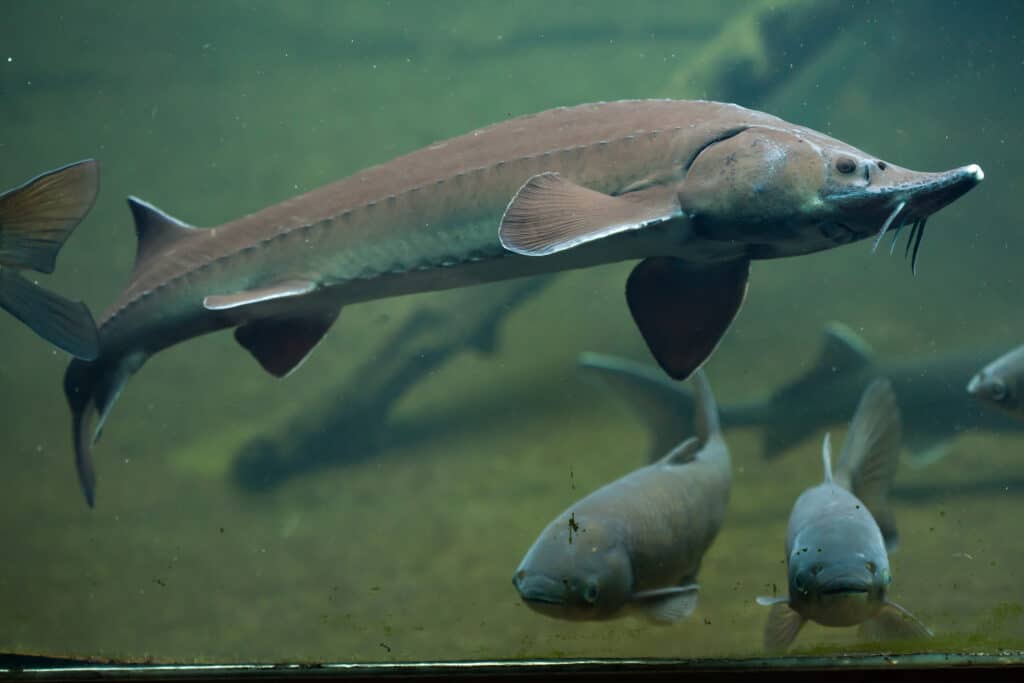
Common barbel
Belonging to the Cyprinidae family, the common barbel (Barbus barbus) has an easily recognisable appearance thanks to the two barbels under its mouth. This is why it has the nickname of ‘old whiskers’!
Native to northern and eastern Europe, this freshwater fish generally prefers to spend the majority of its time in habitats with fast-flowing rivers with gravel or stone bottoms.
Common bream
Sometimes known as the bronze bream because of its colouring, the common bream (Abramis brama) is a large, diamond-shaped fish native to Europe. They’re actually thought to be the only species in the Abramis genus.
These freshwater fish tend to live in schools near the bottom of rivers and ponds, which is why the Danube River is the perfect habitat for them to thrive in.
European perch
The European perch (Perca fluviatilis), also known as the common and redfin perch, is easily identifiable thanks to its striking black vertical stripes down its body and bright red fins. Belonging to the Perca genus, this perch species can grow up to around 60cm and has been known to have a lifespan of over 20 years.
They are a predatory species in nature, typically preying on smaller fish and insects.
Common carp
The common carp (Cyprinus carpio) – also known as the European carp -is a very large fish native to Asia and Eastern Europe, including the Danube. It has a rounded body that is usually grey bronze in colour and typically weighs around 14kg. However, as an exception, the heaviest one ever caught was thought to be around 50kg!
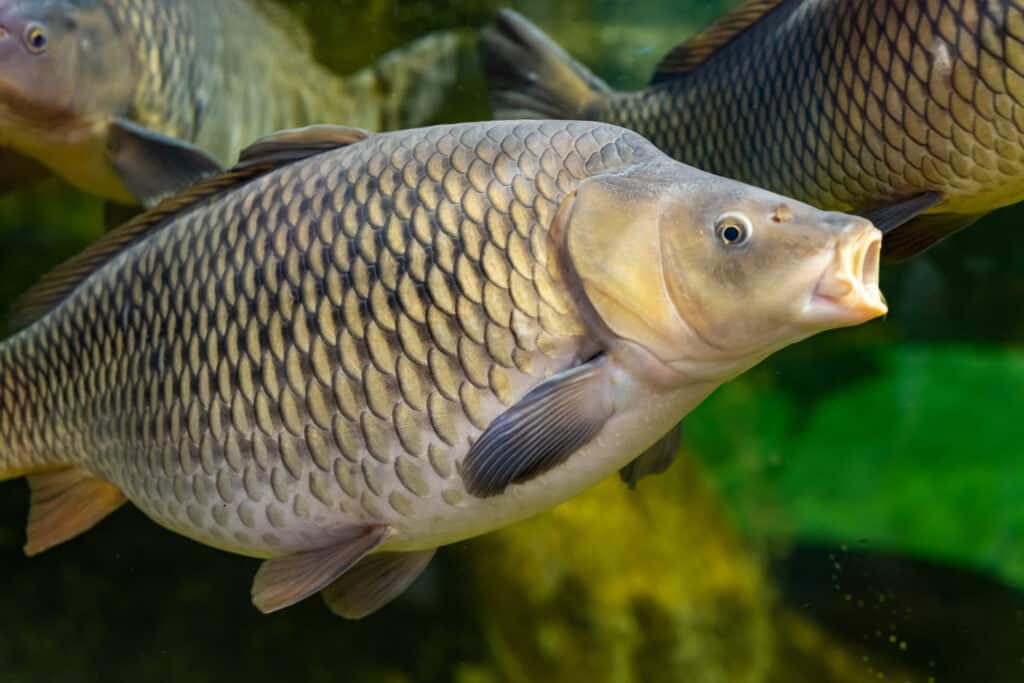
Dalmatian pelican
Say hello to the largest member of the pelican family – the Dalmatian pelican (Pelecanus crispus)! Not only are they the largest of their species, but they’re also arguably the world’s largest freshwater flying bird. The Dalmatian pelican has a huge wingspan of 3.5 metres and, on average, weighs in at over 10kg. With such size, they need plenty of food to sustain themselves, which is why they eat an average of 1,200g of fish every day.
Come and see these fascinating creatures for yourself
You can visit these species right here at Blue Planet Aquarium in our Northern Streams exhibit, where we’ve recreated the freshwater habitat that these creatures thrive in. These six species are in excellent company with other aquatic creatures such as the tench and orfe. This exhibit showcases the behaviours, characteristics and quirks of the wildlife that swims around in the northern streams, lakes and rivers.
Download our activity sheet below and see how many Danube River native species you can find on your way around the aquarium!
We hope you’ve enjoyed diving into the Danube River. To keep on learning about the waterways of the world and the creatures living within them, you can plan your next visit to Blue Planet Aquarium here.
